Multigenerational living involves a household with two or more adult generations. This also includes households with grandparents and grandchildren. This living arrangement has seen a resurgence due to economic, social, and cultural factors.
The concept of extended families living together is rooted in many cultures. In the Western world, it’s often a response to challenges like rising living costs, childcare needs, and elder care. Over 64 million Americans reside in multigenerational households, reflecting a notable increase.
However, transitioning to a multigenerational household has complexities, especially in real estate. Families must find homes accommodating multiple generations, secure financing, and navigate legal intricacies. This article serves as a guide to purchasing and adapting a home for successful multigenerational living.
Understanding the Rise of Multigenerational Living
The trend toward multigenerational living reflects more profound societal shifts. The reasons behind this are multifaceted and intertwined. Let’s explore the primary drivers.
Economic Factors
The high cost of living, especially in urban centers, makes independent housing difficult. High rental prices, stagnant wages, and student loan debt drive many to seek economical living arrangements. Sharing housing costs among multiple earners within a family can alleviate this financial strain.
Multigenerational living can be a solution to the housing affordability crisis. It allows families to pool resources and purchase a larger, more suitable home. This is especially true when compared to what they might afford individually.
Social and Cultural Trends
Increased life expectancy has led to a larger aging population. Many seniors prefer to age in place with family rather than move to assisted living. There’s also a growing recognition of the value of close family ties and intergenerational support.
In some cultures, multigenerational living has always been the norm. This tradition is being maintained or revived as families recognize the benefits. These include close proximity and shared experiences.
Practical Considerations
Modern life often requires dual-income households, leaving parents struggling to balance work and childcare. Having grandparents in the same household can provide invaluable assistance with childcare. This can reduce the need for expensive daycare services.
And as parents age, having adult children living with them can provide crucial support. This includes daily tasks, healthcare management, and companionship. This allows seniors to maintain their independence for longer.
Finding the Right Home for Multigenerational Living
Finding a property that caters to the needs of multiple generations requires careful planning. The ideal multigenerational home isn’t just about square footage. It’s about creating a functional living environment that respects everyone’s needs.
Separate Living Spaces/Privacy
Each generation needs its own private space. This can be achieved through various design features, such as in-law suites or accessory dwelling units (ADUs). These are self-contained units, often with separate entrances, kitchens, and bathrooms.
Multiple master bedrooms or suites are also beneficial. They allow different generations to enjoy comparable comfort and privacy. For example, finished basements or attics can be converted into living areas, providing separation for different family units.
Accessibility
If the household includes elderly members, accessibility features are paramount. Ramps, wider doorways, grab bars, and stairlifts can make the home safer. Single-story homes or those with elevators eliminate challenges posed by stairs.
Homes with main-floor bedrooms and bathrooms are ideal. They ensure essential living spaces are easily accessible. This is especially helpful for people with mobility issues.
Common Areas for Gathering
Private spaces are essential, but multigenerational homes should also have ample common areas. These areas encourage interaction and shared experiences. Large kitchens with spacious islands or dining tables facilitate family meals.
Furthermore, spacious living or family rooms provide a comfortable, relaxing setting, while outdoor patios, decks, or yards offer space for recreation.
Flexibility and Adaptability
A multigenerational family’s needs can evolve. Choose a home that offers flexibility that can be adapted to changing circumstances, such as rooms that can be repurposed.
Also, consider the potential for future additions or renovations. This is especially important as family dynamics change.
Location, Location, Location
The location of the home is vital. Proximity to family members can be a key factor, especially if the arrangement involves shared childcare or elder care. Access to quality schools is also important if there are school-aged children.
Additionally, nearby healthcare facilities are important for all family members, particularly seniors. Plus, safe, walkable neighborhoods with parks and community centers enhance the quality of life. And often times, public transportation can be beneficial for older adults or young adults who may not drive.
Work with a Real Estate Agent Experienced in Multigenerational Homes
Finding a home for multigenerational living can be easier with a qualified real estate agent. Ideally, this agent should have experience in the multigenerational housing market. They can provide insights into local market trends and identify properties with the necessary features.
When interviewing agents, inquire about their experience with multigenerational homes. Ask about the transactions they’ve handled and their understanding of these households’ needs.
An experienced agent will be familiar with zoning regulations related to ADUs and accessibility requirements. They will listen to the family’s needs and work to find a suitable property. So, be sure to ask all your questions.
Financing Your Multigenerational Home
Securing financing for a multigenerational home can present unique challenges and opportunities. Lenders assess the combined income and creditworthiness of all borrowers. This can potentially lead to more favorable loan terms.
However, it’s essential to understand the various mortgage options and their implications. So, let’s explore some financing avenues.
Joint Mortgages
This is common, with multiple family members as co-borrowers. Each borrower is equally responsible for payments. This allows the family to pool incomes, potentially qualifying for a larger loan or lower interest rate.
Each borrower’s credit history will be affected by the mortgage, both positively and negatively. Late payments by one borrower can impact all co-borrowers’ credit scores. Keep this in mind when choosing this option.
Co-Signer Options
If family members have limited credit history or insufficient income, a co-signer may be necessary. A co-signer, typically a family member with strong credit, agrees to be responsible for the mortgage if the other borrowers default. This can help secure financing, but it’s a significant responsibility for the co-signer.
Specialty Mortgage Products
Some lenders offer products designed for multigenerational homebuyers. These may offer flexible underwriting guidelines or features tailored to extended families. It’s worth exploring these options with mortgage brokers specializing in this market. There may also be options such as FHA and VA loans.
Budgeting for a Multigenerational Home Purchase
A comprehensive budget is essential. This involves calculating the combined income and expenses of all participating family members.
It’s helpful for each family unit to contribute to a shared savings plan. This plan will cover the down payment, closing costs, and ongoing housing expenses. A detailed budget helps determine how much each member can contribute. It also ensures mortgage payments are manageable.
It’s also prudent to create a contingency fund for unexpected repairs since you never know when something may need to be fixed.
Legal and Ownership Considerations
The legal structure of homeownership in a multigenerational arrangement is crucial. Different structures have varying implications for liability, inheritance, and decision-making.
Joint Tenancy
This is common, where all co-owners have equal shares and the right of survivorship. If one owner dies, their share automatically passes to the surviving owners. This makes things simple if one member passes away.
Tenants in Common
In this structure, each co-owner can hold a different percentage of ownership. Their share can be bequeathed to their heirs in their will.
Consult with a real estate attorney to determine the most appropriate ownership structure. A legal agreement outlining each member’s rights, responsibilities, and financial obligations should be drafted. This agreement should be signed by all parties.
The agreement should address contributions to payments, maintenance responsibility, and renovation decision-making. It should also address procedures for resolving disputes. Finally, it should include exit strategies if a member wants to sell their share or move out.
Creating a Harmonious Multigenerational Living Environment
Finding the right home and securing financing are crucial steps. However, long-term success hinges on establishing a harmonious living environment. Communication is essential.
Establishing Ground Rules and Boundaries
Open communication is the cornerstone of any successful multigenerational household. Regular family meetings should be held to discuss household matters and make decisions collectively, which will help prevent conflicts.
Furthermore, established house ground rules should cover areas such as privacy and respecting each other’s space. They should also include how chores are divided fairly among family members. Establishing quiet hours and guidelines for guests are also important.
Designing for Different Lifestyles and Needs
The home’s design should accommodate diverse lifestyles and needs. Creating designated private spaces for each family unit is crucial. This maintains a sense of independence.
Additionally, incorporating universal design principles can enhance functionality. These principles focus on creating spaces accessible to people of all ages and abilities.
Conflict Resolution Strategies
Disagreements are inevitable. Establishing a process for resolving conflicts constructively is essential. This may involve active listening and compromise.
In some cases, seeking assistance from a neutral third party may be beneficial. This could be a family therapist or mediator. Remember, the goal is to live together happily.
Closing Points
Multigenerational living offers a solution to many challenges facing families today. The economic benefits, enhanced family bonds, and mutual support make it attractive.
However, multigenerational living requires careful planning, open communication, and a willingness to adapt. Families can increase their chances of creating a fulfilling experience by addressing the financial, legal, and logistical considerations.
The key is to approach multigenerational living with cooperation, flexibility, and mutual respect. The rewards of living together as an extended family can far outweigh the challenges.
© 2025 xpertRealtyMarketing.


